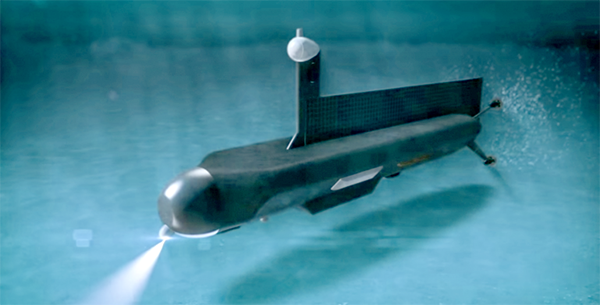
NASA boffins have created a design of a submarine they imagine might one day be used to explore the seas of Saturn’s moon Titan, The Register writes.
NASA plans to send submarines into space around the year 2040. At the recent 2015 NASA Institute for Advanced Concepts (NIAC) Symposium in Cocoa Beach, Florida, NASA scientists and engineers presented a study of the Titan Submarine Phase I Conceptual Design. The submarine will explore Saturn’s largest moon, Titan, and the seas of liquid hydrocarbons at the Titanian poles, Gizmag.com writes.
”Saturn’s frigid moon Titan, visited by the Huygens probe in 2005, has a thick atmosphere and three vast northern polar seas of methane and ethane: these seas are of particular interest for future exploration.”
”In many ways a Titan submarine has autonomy requirements comparable with a terrestrial one and the propulsion/hydrodynamic considerations are similar. However, the direct transmission of worthwhile amounts of data over a billion miles to Earth requires a large antenna, implemented as a planar phased-array dorsal fin.”
”The vehicle would use conventional propulsors to yaw around.”
”The vehicle would observe – and perhaps ultimately exploit – tidal currents in the sea, which follow a cycle once per Titan day, or 16 Earth days. When surfaced, as well as communicating with Earth, the vehicle would use a mast-mounted camera to observe the sea state and shoreline landscape, and would record meteorological observations. Measurement of the trace organic components of the sea, which perhaps may exhibit prebiotic chemical evolution, will be an important objective, and a benthic sampler would acquire and analyze sediment from the seabed. These measurements, and seafloor morphology via sidescan sonar, may shed light on the historical cycles of filling and drying of Titan’s seas.”
Source: 46th Lunar and Planetary Science Conference (2015)

 NewsVoice är en oberoende nättidning med utgivningsbevis som startade 2011. Syftet är att publicera nyheter, debattartiklar, kommentarer och analyser.
NewsVoice är en oberoende nättidning med utgivningsbevis som startade 2011. Syftet är att publicera nyheter, debattartiklar, kommentarer och analyser. 